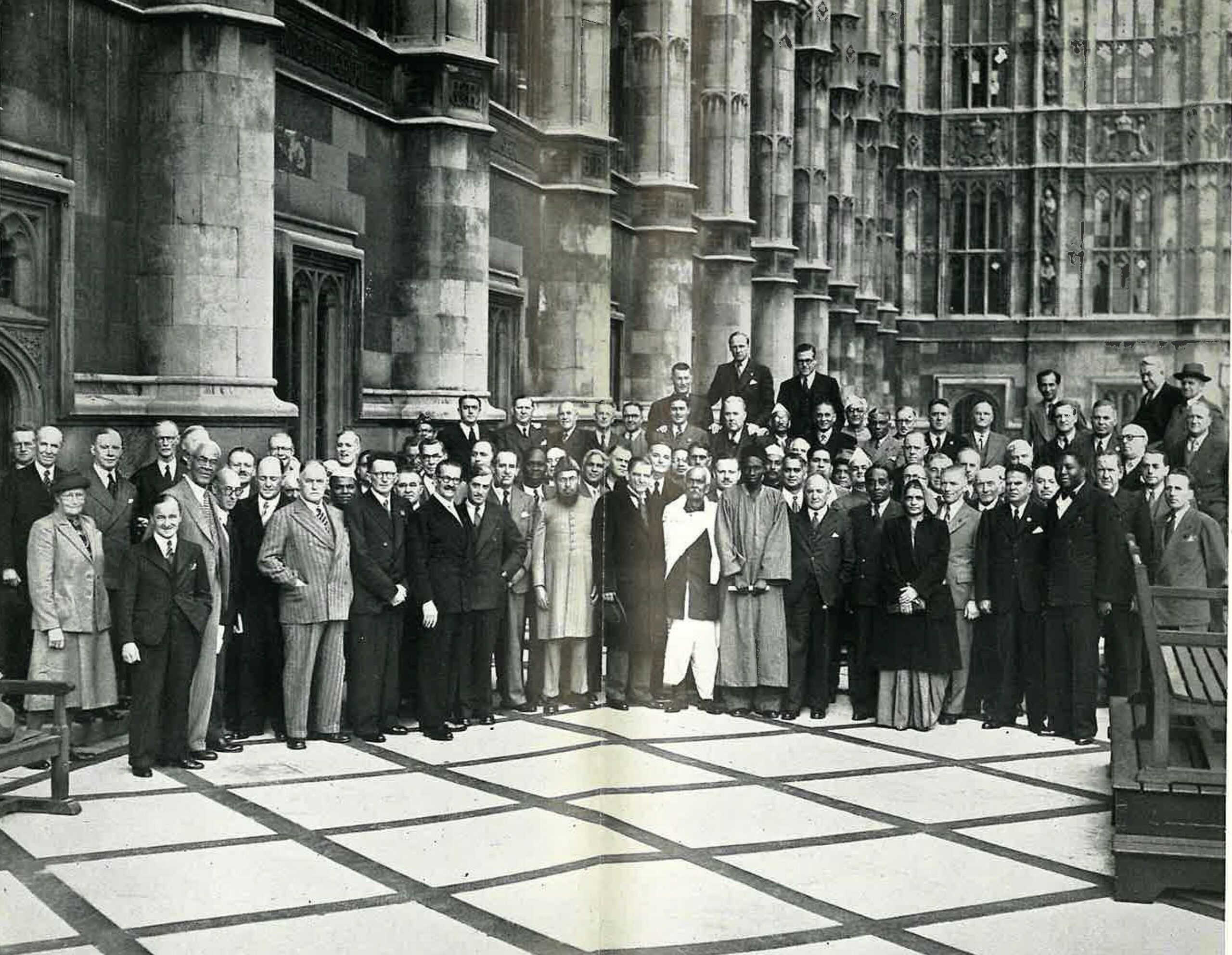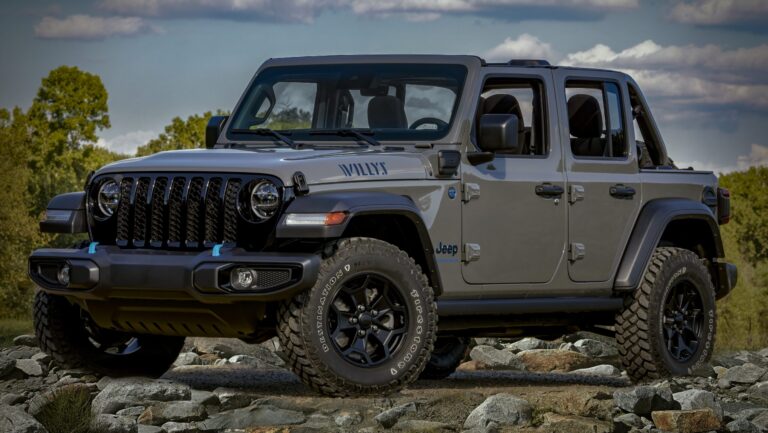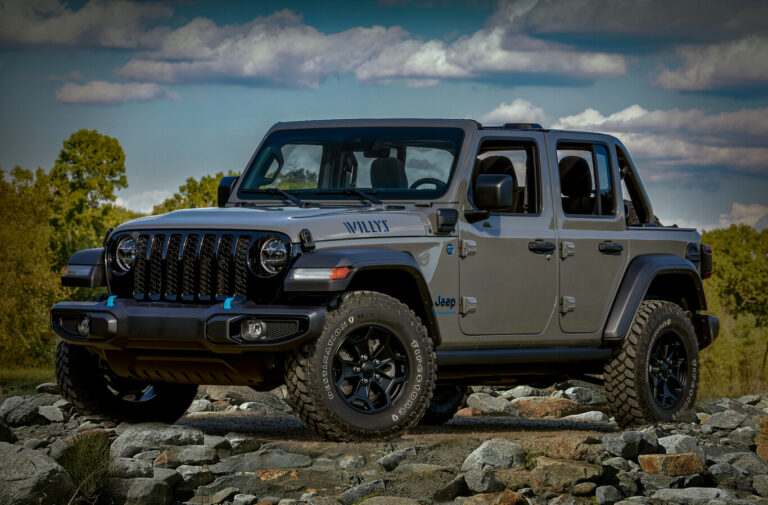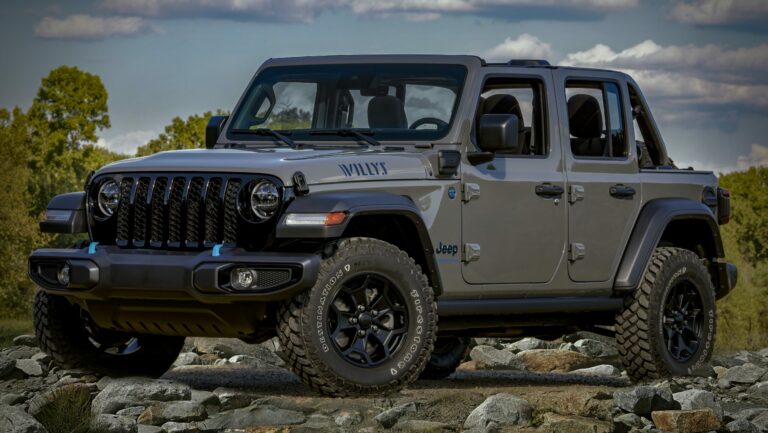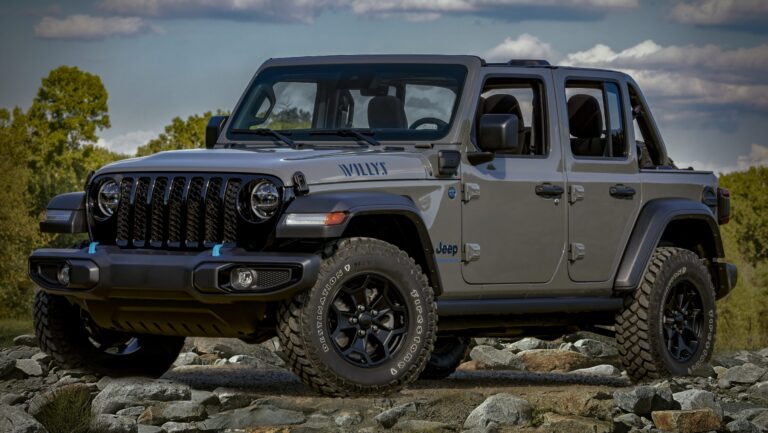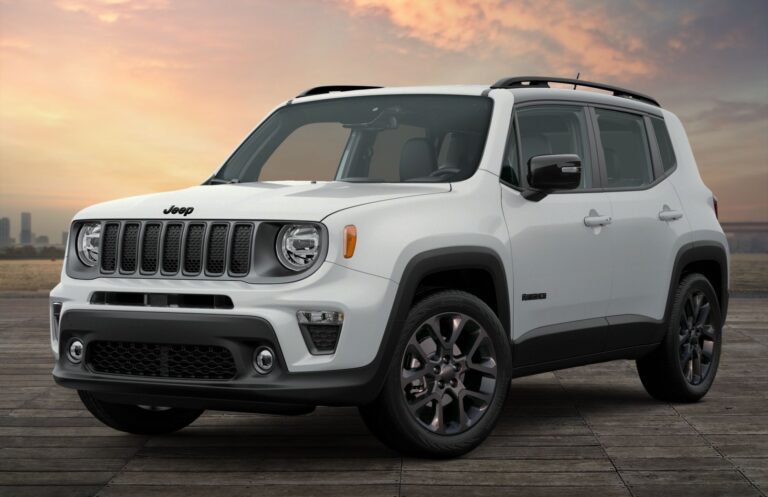1948 Willys Jeep Truck For Sale: A Comprehensive Buyer’s Guide
1948 Willys Jeep Truck For Sale: A Comprehensive Buyer’s Guide jeeps.truckstrend.com
Introduction: The Enduring Allure of a Post-War Icon
In the annals of automotive history, few vehicles possess the rugged charm, utilitarian spirit, and iconic status of the Willys Jeep. Emerging from the crucible of World War II, where its military predecessor, the MB, proved indispensable, Willys-Overland quickly adapted its robust design for civilian life. The 1948 Willys Jeep Truck stands as a testament to this transition – a versatile, no-nonsense workhorse that helped rebuild America, one farm, one construction site, and one small business at a time.
1948 Willys Jeep Truck For Sale: A Comprehensive Buyer’s Guide
More than just a means of transport, owning a 1948 Willys Jeep Truck is an embrace of history, a commitment to classic American engineering, and an entry into a passionate community of enthusiasts. Its distinctive flat-fender styling, powerful "Go-Devil" engine, and legendary four-wheel-drive capability make it a highly sought-after classic today. Whether you’re a seasoned collector, an off-road adventurer, or simply someone yearning for a piece of authentic Americana, understanding what goes into finding and acquiring a 1948 Willys Jeep Truck for sale is paramount. This comprehensive guide aims to equip you with the knowledge and insights needed to navigate the market and bring one of these timeless machines home.
The Enduring Legacy: Why a 1948 Willys Jeep Truck?
The journey of the civilian Willys Jeep began in 1945 with the CJ-2A, quickly followed by adaptations into wagon and truck variants. The 1948 Willys Jeep Truck, part of the initial wave of full-size Willys utility vehicles, inherited the military Jeep’s DNA: simplicity, durability, and unparalleled off-road prowess. It was designed to be a tool, not a luxury item, and its straightforward mechanics and robust construction reflect this philosophy.
Key Appeals:
- Historical Significance: Represents a pivotal moment in American automotive manufacturing, transitioning from wartime production to civilian utility.
- Rugged Reliability: Built with over-engineered components, these trucks were made to last and endure harsh conditions.
- Mechanical Simplicity: Lacking complex electronics, they are relatively easy to maintain and repair for those with basic mechanical aptitude.
- Distinctive Aesthetics: The iconic flat-fender design, prominent grille, and utilitarian lines give it an unmistakable and appealing vintage look.
- Versatility: Originally designed for farming, hauling, and light industrial work, they remain capable off-roaders and unique project vehicles.
- Community: A vibrant global community of Willys enthusiasts provides support, parts, and camaraderie.

For many, the appeal lies in the connection to a bygone era, where vehicles were built with purpose and character. The 1948 Willys Jeep Truck offers a tangible link to this past, providing a driving experience unlike anything modern.
What to Look For: Key Features and Specifications
Before diving into the market, it’s crucial to understand the core components and characteristics of a 1948 Willys Jeep Truck. This knowledge will help you identify authentic models, assess condition, and understand potential maintenance needs.
- Engine: The heart of the 1948 Willys Truck is typically the "Go-Devil" L-134 flathead four-cylinder engine. This legendary 2.2-liter (134 cubic inch) engine is known for its simplicity, low-end torque, and incredible durability, albeit not for speed. It produces around 60 horsepower.
- Transmission: Most 1948 trucks came equipped with a Borg-Warner T-90 3-speed manual transmission, a robust and reliable unit.
- Transfer Case: Power is sent to the axles via a Spicer 18 transfer case, offering 2-wheel drive high, 4-wheel drive high, and 4-wheel drive low ranges, providing excellent off-road capability.
- Axles: The truck typically features a Dana 25 front axle and a Dana 41 rear axle, known for their strength in a period-correct utility vehicle.
- Body Style: The 1948 Willys Jeep Truck is a distinct pickup truck variant, sharing its front clip and cab design with the Willys Station Wagon and Sedan Delivery of the era, but featuring a dedicated pickup bed. Early models often had a narrower bed compared to later versions.
- Chassis: A heavy-duty ladder frame provides the foundation, contributing to its ruggedness.
- GVW (Gross Vehicle Weight): Approximately 4,200 lbs, indicating its capacity for hauling.

When inspecting a potential purchase, pay close attention to the originality of these components. While many trucks may have received engine or drivetrain swaps over the decades, an original, well-maintained setup often commands a premium.
Navigating the Market: Condition Categories and Pricing Factors
The price of a 1948 Willys Jeep Truck can vary dramatically based on its condition, originality, and the current market. Understanding the common categories will help you set realistic expectations and budget accordingly.
Condition Categories:
-
Project/Parts Vehicle: These are typically non-running, incomplete, or severely rusted trucks. They require extensive restoration, often including frame repair, bodywork, and a complete mechanical overhaul.
- Price Range: $3,000 – $8,000
- Considerations: Best for experienced restorers with significant time, tools, and budget. Cost of parts and labor can quickly exceed initial purchase price.
-
Driver Quality: These trucks run and drive, are generally presentable, but may have visible rust, worn paint, or minor mechanical issues. They can be enjoyed immediately but will benefit from ongoing maintenance and cosmetic improvements.
- Price Range: $9,000 – $20,000
- Considerations: A good entry point for enthusiasts who want to enjoy the truck while slowly improving it. Inspect thoroughly for hidden problems.
-
Restored: These vehicles have undergone professional or high-quality amateur restorations. They feature new paint, upholstery, rebuilt mechanicals, and are in excellent overall condition, often ready for local shows.
- Price Range: $25,000 – $45,000+
- Considerations: Less immediate work required. Investigate the quality of the restoration; a poor restoration can hide problems. Receipts and documentation are crucial.
-
Show/Concours Quality & Original Survivor: These are the rarest and most valuable. Show-quality trucks are flawlessly restored to period-correct specifications. Original survivors are well-preserved, unrestored examples that retain their factory components and patina.
- Price Range: $45,000 – $70,000+
- Considerations: Investment-grade vehicles. Authenticity and documentation are paramount. Often purchased by serious collectors.
Key Pricing Factors:
- Overall Condition: Rust (especially in the frame, floor pans, and bed), mechanical soundness, completeness.
- Originality: Trucks with matching numbers and original components tend to be more valuable.
- Documentation: Service records, previous owner history, original manuals can add significant value.
- Location: Prices can vary regionally due to demand and climate (e.g., dry climates preserve vehicles better).
- Modifications: While some modern upgrades (like disc brakes or 12V conversions) can improve usability, extensive non-period modifications can reduce value for purists.
The Buying Process: Practical Advice for Prospective Owners
Acquiring a classic vehicle like the 1948 Willys Jeep Truck requires diligence and patience.
-
Where to Look:
- Online Marketplaces: Hemmings, Bring a Trailer, eBay Motors, ClassicCars.com, Facebook Marketplace (local and groups).
- Specialty Forums & Clubs: Willys Overland Jeepster Club, CJ-2A Page, G503.com – these communities often have classified sections and trusted sellers.
- Classic Car Dealers & Auctions: Reputable dealers specializing in vintage trucks, or high-end auction houses.
- Word of Mouth: Attend local car shows, ask around in automotive circles.
-
Inspection Checklist:
- Frame: Critical. Look for rust, cracks, or previous repair attempts. Tap with a hammer; a dull thud indicates rust.
- Body: Check for rust in floorboards, bed, fenders, rocker panels, and cab corners. Look for shoddy bondo work.
- Engine: Check for leaks, unusual noises, smoke from the exhaust (especially blue or black). Ask about oil pressure and compression.
- Drivetrain: Test the clutch, shifting of the transmission, engagement of 4WD and low range in the transfer case. Listen for grinding or whining.
- Axles: Check for leaks around differentials and wheel hubs. Listen for humming or clunking noises.
- Brakes: Test pedal feel and stopping power. Check for fluid leaks. These are typically drum brakes.
- Steering & Suspension: Check for excessive play in the steering wheel. Inspect leaf springs, shackles, and shock absorbers.
- Electrical System: Ensure lights, gauges, and wipers function. Many older Willys trucks have been converted to 12-volt systems from their original 6-volt.
- Tires & Wheels: Check condition and age of tires.
- Documentation: Verify VIN on title matches the vehicle. Ask for service records or any history.
-
Test Drive:
- Listen for unusual noises from the engine, transmission, and axles.
- Test brakes, steering, and turn signals.
- Engage 4WD and low range (if safe to do so) to ensure they work.
- Note how it handles at various speeds; these are not highway cruisers.
-
Pre-Purchase Inspection (PPI): For any significant investment, hire a mechanic specializing in vintage vehicles or Jeeps to perform a thorough inspection. Their experienced eye can spot issues you might miss.
-
Negotiation: Research comparable sales and be prepared to negotiate. If the vehicle requires work, factor those costs into your offer.
Ownership and Maintenance: Keeping Your Willys Alive
Owning a 1948 Willys Jeep Truck is a rewarding experience, but it comes with its own set of considerations and challenges.
Potential Challenges:
- Parts Availability: While many mechanical parts (engine, transmission components) are still available through specialty suppliers, specific body panels or trim pieces can be harder to find and expensive.
- Modern Comforts: These trucks lack power steering, power brakes, air conditioning, and advanced safety features. They are slow, noisy, and require more effort to drive.
- Safety: Without modern crumple zones, airbags, or even advanced seatbelts, they offer minimal occupant protection in an accident.
- Fuel Economy: Expect single-digit to low-double-digit MPG.
- Rust: Ongoing battle, especially if exposed to moisture or road salt.
Solutions and Tips for Ownership:
- Join a Community: Connect with other Willys owners through forums and clubs. They are invaluable resources for advice, parts, and technical support.
- Learn Basic Mechanics: These trucks are mechanically simple. Learning to do your own oil changes, tune-ups, and minor repairs will save money and deepen your appreciation.
- Regular Maintenance: Adhere to a strict maintenance schedule. Check fluids, grease points, and inspect for wear regularly.
- Specialty Parts Suppliers: Familiarize yourself with vendors like Kaiser Willys, Walck’s 4×4, and others who specialize in vintage Jeep parts.
- Consider Sensible Upgrades: While maintaining originality is important for value, some upgrades can improve usability and safety without detracting from the classic feel. Common upgrades include:
- 12-volt electrical system conversion (for brighter lights, easier starting).
- Electronic ignition.
- Disc brake conversion (significant safety improvement).
- Better seating or sound deadening.
- Proper Storage: Store your Willys in a dry, covered environment to prevent rust.
- Insurance: Obtain classic car insurance, which typically offers agreed-upon value coverage and lower premiums for hobby vehicles.
Price Table: 1948 Willys Jeep Truck For Sale Estimates
The following table provides estimated price ranges based on the typical condition categories observed in the market. These are general guidelines, and actual prices can fluctuate based on specific vehicle history, modifications, originality, and regional market demand.
| Condition Category | Description | Estimated Price Range (USD) | Key Considerations |
|---|---|---|---|
| Project/Parts | Non-running, significant frame/body rust, major mechanical issues, incomplete, suitable for parts or full ground-up restoration. | $3,000 – $8,000 | Requires extensive time, expertise, and a substantial budget for parts and professional labor. Often ends up costing more than a ready-to-drive example. Verify title availability. |
| Driver Quality | Runs and drives reliably, generally presentable with worn paint, minor body imperfections, some surface rust, and potential small mechanical quirks. | $9,000 – $20,000 | Good for immediate enjoyment. Expect ongoing maintenance and gradual improvements. Thorough pre-purchase inspection is vital to avoid hidden major issues. Great for those who want to "drive and wrench." |
| Restored | Undergone a professional or high-quality amateur restoration. Excellent paint, rebuilt mechanicals, new interior. Ready for shows or reliable cruising. | $25,000 – $45,000 | Quality of restoration is key; ask for documentation and photos. A poorly executed restoration can hide problems. Represents a significant investment, offering a turn-key classic experience. |
| Show/Concours | Flawless, period-correct restoration to exacting standards, or an exceptionally rare, well-preserved original "survivor" with known history. | $45,000 – $70,000+ | Investment-grade vehicle. Every detail is correct or original. Often trailer-queens for prestigious shows. Authenticity and provenance are critical. Limited market, but commands top dollar for the right buyer. |
Note: Prices can be influenced by geographic location (e.g., rust-free states vs. salty climates), specific rare options, and unique historical significance (e.g., celebrity ownership, documented first-owner vehicle).
Frequently Asked Questions (FAQ)
Q: Are parts readily available for a 1948 Willys Jeep Truck?
A: Yes, generally. Mechanical parts for the L-134 engine, T-90 transmission, and Spicer transfer case are widely available through specialty vendors and the aftermarket. Body panels and specific trim pieces can be harder to find but are still available through various channels and reproduction sources.
Q: Can a 1948 Willys Jeep Truck be used as a daily driver?
A: While mechanically capable, it’s generally not recommended for daily modern highway driving. They are slow, loud, lack modern safety features, and are not comfortable for long commutes. They excel as weekend cruisers, farm vehicles, or off-roaders.
Q: What are common problems with these trucks?
A: Common issues include rust (especially in the frame, floor, and bed), electrical gremlins (often due to aging 6-volt systems), worn steering components, and leaky seals. The "Go-Devil" engine is robust but can develop oil leaks and requires regular maintenance.
Q: Is it difficult to work on a Willys Jeep Truck?
A: No, quite the opposite. Their mechanical simplicity makes them ideal for amateur mechanics. With basic tools, a repair manual, and patience, many owners can perform their own maintenance and repairs.
Q: How much does it cost to restore a 1948 Willys Jeep Truck?
A: A full, professional, frame-off restoration can easily cost $30,000 to $60,000 or more, often exceeding the final value of the truck. DIY restorations can be cheaper but still require significant investment in parts, tools, and time.
Q: Are there any modern upgrades recommended?
A: Many owners opt for a 12-volt electrical system conversion for better starting and brighter lights. Disc brake conversions are a popular safety upgrade. Other common modifications include electronic ignition, aftermarket seating, and improved suspension components. However, extensive modifications can reduce originality and potentially value for purists.
Concluding Summary
The 1948 Willys Jeep Truck is more than just a vintage vehicle; it’s a piece of living history, a symbol of American ingenuity, and a testament to rugged utility. Its timeless design and simple, robust engineering continue to captivate enthusiasts worldwide. For those seeking a unique driving experience, a rewarding restoration project, or a tangible connection to the past, a 1948 Willys Jeep Truck for sale represents an exceptional opportunity. While the journey to ownership requires careful consideration of condition, market values, and the commitment to classic vehicle maintenance, the pride and enjoyment of owning such an iconic piece of automotive heritage are immeasurable. It’s an investment not just in a truck, but in a lifestyle.
